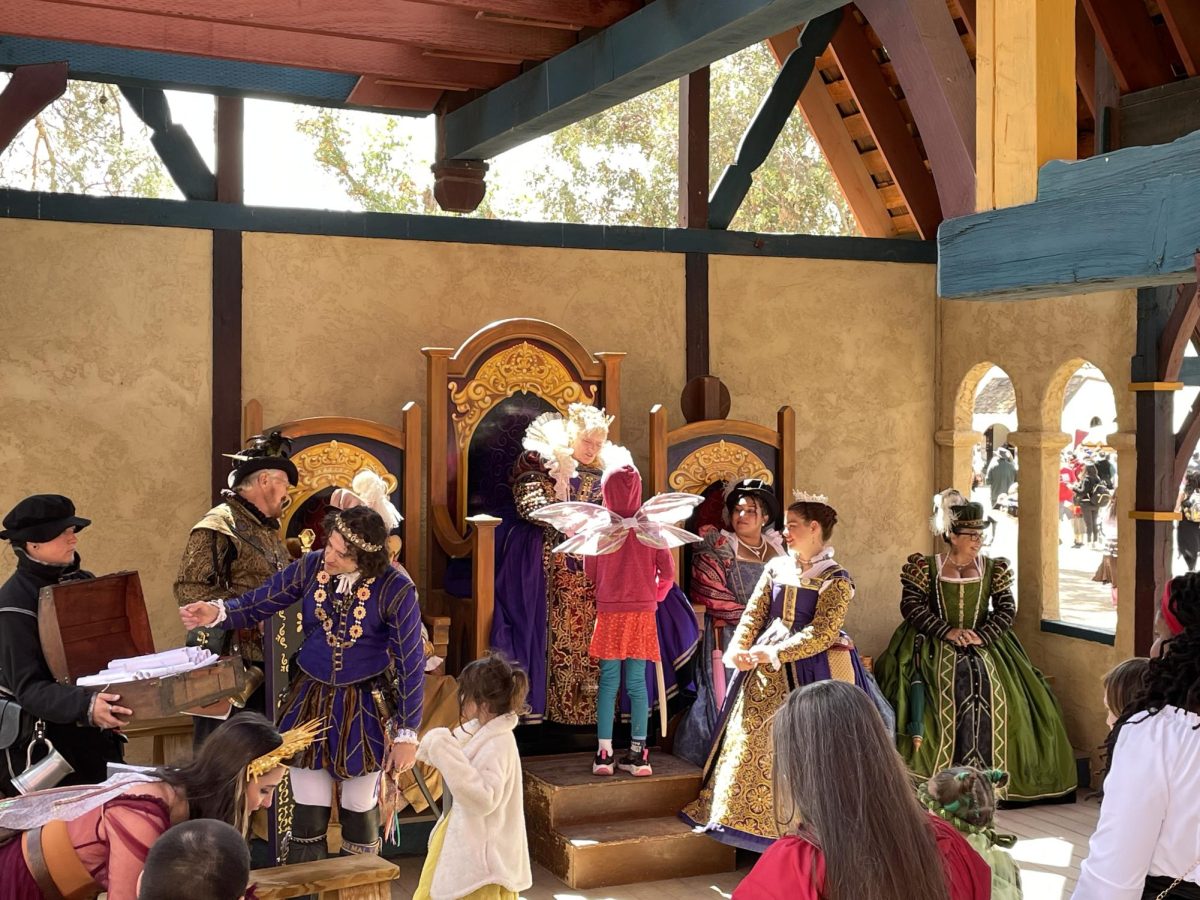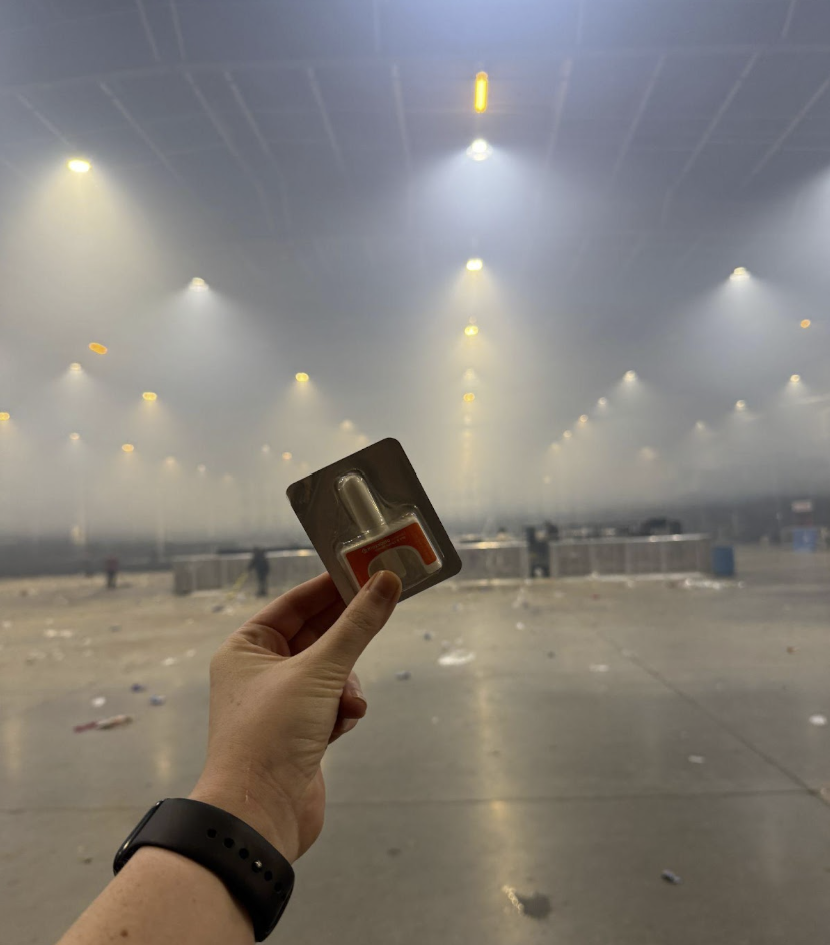Editor’s Note: After verifying the identities of members involved, the Daily Wildcat has made the exception of keeping the identities of those involved with the “Campus Frogs” page anonymous in order to preserve the creators’ vision of the group. The following aliases will be used: Micro, Harlequin & Dysco.
Campus Frogs of U of A, otherwise known as Campus Frogs, is an anonymous group of three individuals who leave felt frog plushies around the University of Arizona campus. Their Instagram page is filled with various photos of frog plushies that range in designs and sizes, each frog having its own unique name and background.
Created in October of 2021, Campus Frogs started out as a way to make the people on campus feel more at home and connected to the campus community during the peak of the COVID-19 pandemic.
“We [Dysco and Micro] were just walking on campus one night and I was like, ‘I saw this really cute idea. What if we just like made frogs and put them places?’” Dysco said.
“We started off with Halloween and then we weren’t sure if we were gonna do just Halloween. But I remember […] we hid a frog in the ILC center [Manuel T. Pacheco Integrated Learning Center] and we got messaged by this guy and he’s just like, ‘oh, my god, you made my day so much better! I was having like a terrible day and it’s just so great now’ and we both just like screamed and freaked out because it’s like someone found our frog and contacted us,” Dysco said.
Since the discovery of their first frog, many students have reached out to Campus Frog’s Instagram page either to get updates on the latest frog creations, to let them know about their latest frog discovery and even ask for hints on the location of the latest plushie. However, Micro stated that the group doesn’t typically give out hints since the occurrences of the hidden frogs are meant to be random, an unexpected surprise for the walking pedestrian.
The crafting of the frogs and the managing of the social media page is evenly distributed amongst the members, although preferences are made, with Dysco typically crafting the base of the plushies, Harlequin decorating the frogs and Micro creating the posts.

In regard to the content of the Instagram page, Micro explained that the creation of the background story in each caption is determined based on various factors.
“Sometimes we’ll start like as you’re making a frog. You come up with a story for them as you go, and this happens a lot with the more complicated frogs. You’ll add little details and stuff and say, ‘Okay, this is the frog’s personality,’” Micro said. “And then you know what you want and you might even have a bio typed up ahead of time, and like the frog and the bio are deeply connected. But a lot of times we’ll just make a bunch of frogs and then […] come up with stories for them in a separate run and all at once.”
Campus Frogs stated that they typically hide their frogs on campus every two weeks, but when the bigger holidays come around — like Halloween and Christmas — there is a longer time period between drops in preparation for those holidays.
The plush frogs typically take around 25 minutes to three hours to make depending on the complexity of the design.
The themes for their frogs usually revolve around holidays, but they don’t just focus on the major ones. They also aim to theme frogs after underrepresented holidays.
“There are a lot of holidays that are kind of underrepresented, I found, so having the opportunity to make one for a holiday like that [Spring Equinox], like [one that] not very many people celebrate, it was fun. I got to do a lot of research and figure out what colors were related to it,” Harlequin said.

The group also seeks to, in Micro’s words, “normalize diversity” through their frogs, an example shown through the use of various pronouns in their frogs’ bios.
When hiding their frogs, they try to make sure that the frogs are hidden in accessible places so that anyone could find them, as well as in places that avoid harsh weather conditions like rain. Typically, the hiding spots are near buildings.
According to Dysco, Campus Frogs has hidden at least 160 frogs on campus, although they’ve personally only been notified of 37 of those frogs being found.
Anonymity is a very important aspect of Campus Frogs, for the creators of the account want the focus to be on the frogs and the mystery behind their origins.
“We [like to] say the frogs are from a different dimension because they are. It’s always nice to have a little more magic in your life, and putting a name on that lessens the magic,” Micro said.
The group doesn’t have any plans on expanding Campus Frogs from what it is now, but they do hope that they can keep the activity of the page alive in the future, since the creators of the group won’t be on campus to hide these frogs forever.
The group did point out that there have been other individuals who have been inspired by their work and created pages of a similar nature. One of these accounts is called UofA Mice Guys, who once a month hide crocheted mice on campus and they reveal the location of the mice through a riddle.
What the members of Campus Frogs love about the page is the audience interaction that comes with it. They actively encourage people who find their frogs to tag them in their posts or direct message them, as it personally makes their day knowing someone has taken home one of their creations.
“We have a couple of different ideas for themed frogs, and we were going to ask people to vote on like what should come next, and I think that the more that kind of [gets] people to be comfortable interacting with the account, the better [a] contest like that will actually go,” Harlequin said.
Overall, Campus Frogs hopes to continue making the day of the people of the UA community and hopes that their actions help make the world a little bit more of a better place.
You can follow Campus Frogs on both their Instagram and TikTok page @campusfrogs. They are always seeking ideas for new themes and designs for their frogs and actively encourage visitors to direct message them.
Follow Tereza Rascon on Twitter









